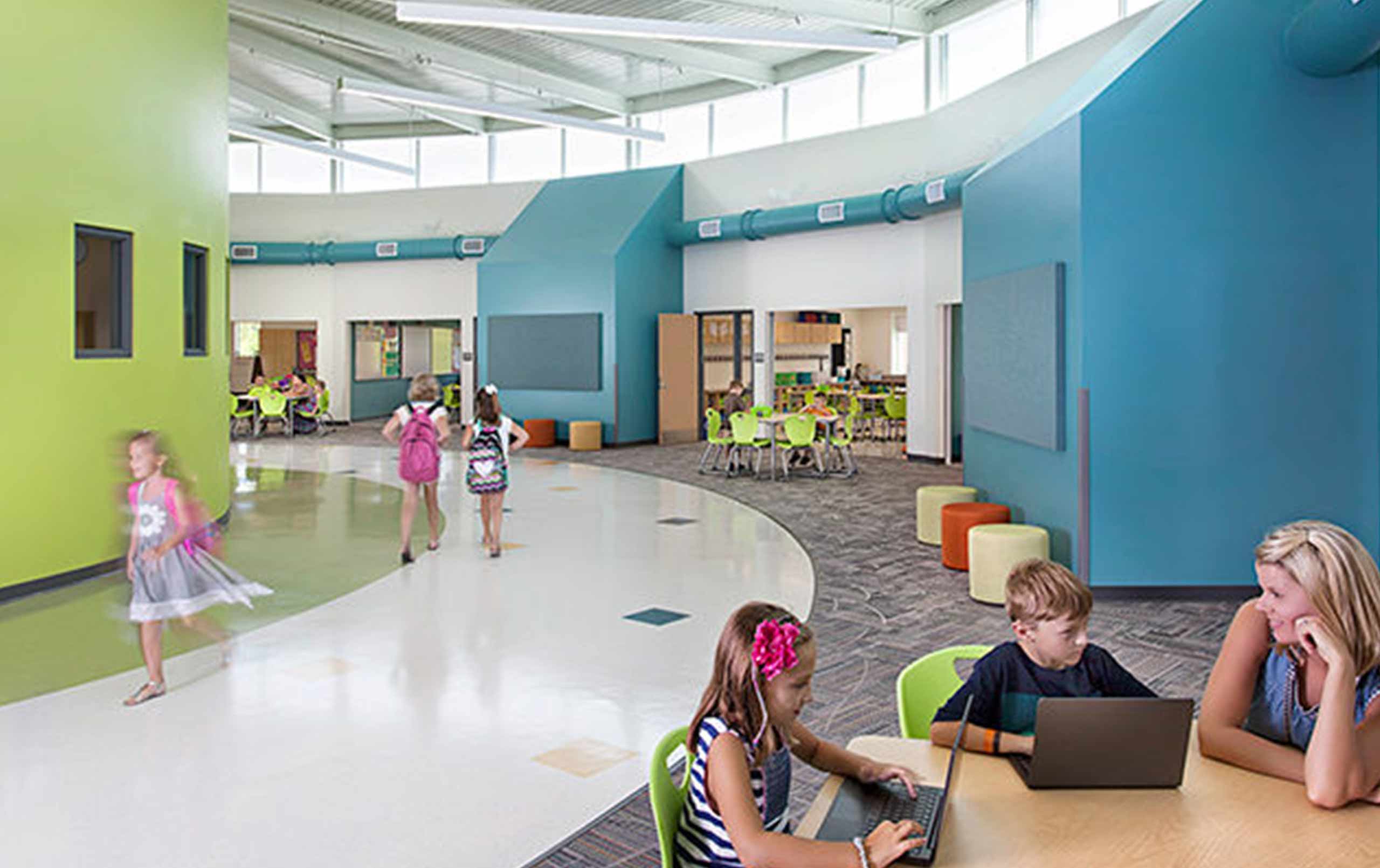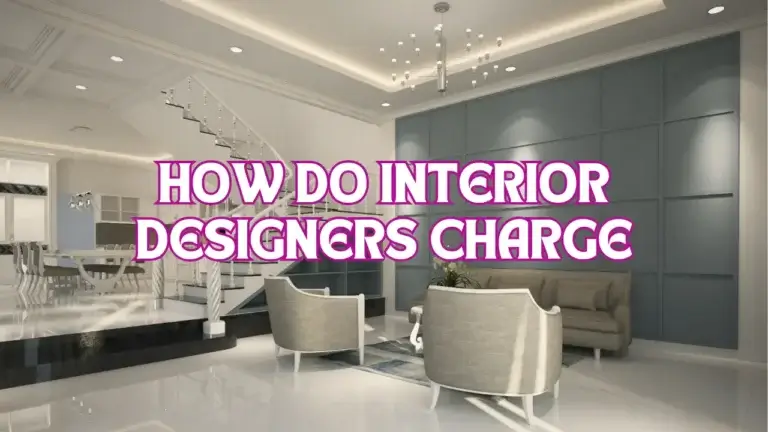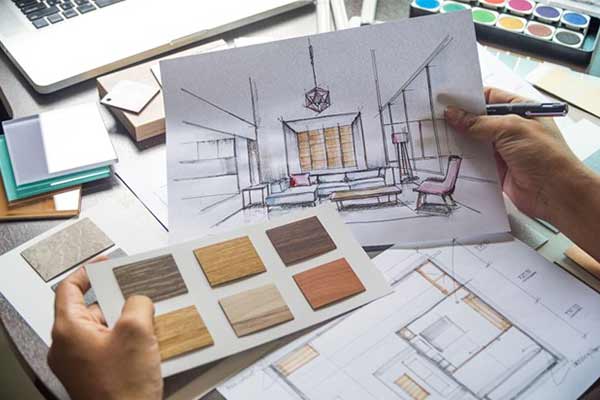Can Interior Design Be Learned? Yes, interior design can be learned. Many people start with no experience.
With dedication, anyone can learn the basics and improve over time. Interior design is not just about having a natural talent or eye for aesthetics. It involves understanding principles like color theory, spatial arrangement, and functionality. You can learn these concepts through courses, books, and practice.
Many professional designers started their careers by learning the basics and then refining their skills through experience. Whether you want to decorate your own home or pursue a career in interior design, there are resources available to help you get started. This blog will guide you through the essentials and show you that learning interior design is entirely possible and rewarding.

Credit: concepts.app
What is Interior Design?
Interior design is a kind of decorating and enhancing spaces to make them not only pleasing to eyes but useful and functional as well. It will include careful choosing of colors, furniture, lights, textures, and spaces for creating a lovely atmosphere. Well-designed room is not only pleasing to eyes, and it will surely enrich lives of its occupiers. Interior design can convert small and crowded spaces into expansive and welcoming spaces. It can convert a dim room brighter and lighter in terms of its inner spaces. From residential and commercial spaces to public spaces, a proper design can lift moods, boost productivity, and instills a feeling of well-being.
The Need for Interior Design
Interior design is important for a reason: it directly impacts how and what and whom we perceive and function in a room.
A well-designed room can evoke feelings, instills a feeling of calm, and energizes humans for productivity. For one, a warm and cozy residence brings comfort and sleep, and a modern and vibrant workplace inspires productivity and creativity. Not only for its beauty, interior design helps in efficient planning and use of spaces, and each square meter works for a purpose. That, in a way, ensures security, through efficient positioning of furniture, sufficiency of lights, and proper ergonomically positioning. Essentially, interior design creates one’s worldview regarding one’s living with and in an environment.
The Role of Creativity in Interior Design
It grants permission for a designer to out-think, combine and contrast, and try out colors, textures, and positioning of furniture.
A creative designer can make a run-of-the-mill room an extraordinary room simply because such a designer brings form and function together. Old and recycled furniture, unorthodox materials, and spaces maximized creatively make use of all spaces. With a dash of creativity, no two spaces will ever become duplicates; each will gain its personality and character. It can be a simple modern apartment, a grand luxurious mansion, and yet a designer’s imagination brings a dream to life. With no room for thinking creatively, interior decorating will become uncreative and lifeless.

Credit: www.legat.com
Natural Talent Vs. Learned Skills
Some people are born with a natural sense of style. They can see beauty in simple things. This innate creativity helps them in designing. Their ideas seem to come naturally. They often find it easy to match colors and textures. Their talent makes their designs unique. Yet, not everyone has this natural gift. Many people need to learn and practice to improve.
Design skills can be learned through study and practice. Courses and books offer great knowledge. Many schools teach interior design. These courses cover color theory, space planning, and materials. Practice helps improve these skills. Working on projects builds confidence. Over time, anyone can become good at design. Learning from experts also helps. Many designers share their tips online. Observing their work can provide inspiration.
Educational Pathways
Yes, interior design can be learned. With courses and practical experience, anyone can develop design skills. Creativity and practice are key.
Formal Education in Interior Design
Formal education in interior design can be a great way to lay a strong foundation. Most colleges and universities offer degree programs in interior design, ranging from associate’s and bachelor’s degrees to specialized certifications. These programs cover basic subjects such as:
- Basic Design Principles: Studying balance, harmony, and functionality in space planning.
- Material Selection: Studying different materials, fabrics, and furniture styles.
- Color Theory: Studying how colors affect mood, perception, and aesthetics in interior spaces.
- Software & Tools: Practicing hands-on skills with design software like AutoCAD, SketchUp, or Coohom 3D modeling software.
- Practical Projects: Applying learned concepts through actual or simulated design projects.
Online Courses And Workshops
For the flexible learner, online courses and workshops are an ideal way of learning interior design skills. There are numerous websites that provide step-by-step courses for beginners and professionals. Some advantages of learning online are:
- Accessibility: Learn anywhere at your convenience.
- Affordability: Some courses are free, and some charge a nominal fee.
- Skill Enhancement: Ideal for beginners who wish to start or professionals who wish to update their skills.
- Specialized Learning: Workshops are more likely to specialize in a specific area like lighting design, space planning, or furniture placement.
Some of the websites that provide good-quality courses by professional designers are Udemy, Coursera, Skillshare, and MasterClass. Apart from that, interactive workshops offer hands-on practice, and students can experiment with design ideas in real-time.
Regardless of the mode of learning adopted, the key to becoming proficient in interior design is practice, creativity, and experimentation with new ideas. Through formal education or online learning, young designers can learn the skills to design inspiring and functional spaces.
Essential Design Principles
Balance means that all parts of a room feel equal. Balance can be symmetrical or asymmetrical. Symmetrical balance uses the same objects on both sides. Asymmetrical balance uses different objects but still feels even. Harmony makes a room feel whole. All elements work together and look like they belong. Colors, shapes, and textures blend well in a harmonious space.
Colors can change the mood of a room. Warm colors like red and yellow feel cozy. Cool colors like blue and green feel calm. Light can also change how colors look. Natural light is the best. It shows true colors. Artificial light can make colors look different. Use a mix of lights for the best effect. Task lighting, ambient lighting, and accent lighting work well together.
Practical Experience
Gaining practical experience is crucial in interior design. Internships offer real-world experience. You work with skilled designers. You learn the day-to-day tasks of the job. Apprenticeships provide similar benefits. They often last longer and can lead to job offers. Both options help you build a strong resume. They also allow you to network with industry professionals.
Creating a portfolio is essential. It shows your skills and style. Include photos of your work. Add sketches and design plans. Make sure to show a range of projects. This helps potential employers see your versatility. Update your portfolio regularly. Keep it fresh and relevant. A strong portfolio can help you stand out in the job market.

Credit: www.hksinc.com
Tools And Resources
Design software helps create floor plans and room layouts. Many professionals use AutoCAD and SketchUp. These tools make it easy to draw and change designs. Photoshop is great for editing images and creating mood boards. Roomstyler is a simple tool for beginners. It helps visualize spaces in 3D. Many of these tools have free versions available.
Books and magazines offer many design ideas. Pinterest is a popular site for finding inspiration. Instagram has many designers sharing their work. YouTube has tutorials and tips from experts. Online courses are available on platforms like Coursera and Udemy. These sources help learn about styles, colors, and trends. Visiting showrooms and model homes also provides fresh ideas.
Overcoming Creative Blocks
Many face creative blocks in interior design. Self-doubt can make it hard to start. Perfectionism can stall progress. Lack of inspiration is common too. Time constraints add pressure. These challenges can be tough. But, they can be overcome.
Taking breaks can help. Exploring new places often sparks ideas. Talking with others can inspire. Sketching freely without a plan can free the mind. Looking at magazines or online for inspiration is helpful. Setting small goals makes tasks less daunting. Listening to music can also boost creativity. Trying different techniques helps too.
Success Stories
Many designers teach themselves. They start with books. Online courses help too. Practice is key. They decorate their homes first. Friends’ homes come next. Experience grows with each project. They learn from mistakes. They improve with time. Many become successful.
Some famous designers never went to school. They learned by doing. Kelly Wearstler is one. Nate Berkus is another. They built their names with hard work. Talent and passion drive them. They inspire many. Their work is admired. Their stories motivate others.
Frequently Asked Questions
Can Anyone Learn Interior Design?
Yes, anyone can learn interior design. It requires practice, creativity, and study.
What Skills Are Needed For Interior Design?
Key skills include creativity, attention to detail, spatial awareness, and knowledge of design principles.
How Long Does It Take To Learn Interior Design?
Learning interior design varies. It can take months to years, depending on the depth of knowledge desired.
Are There Online Courses For Interior Design?
Yes, many online courses are available. They offer flexible learning options for beginners and professionals.
Conclusion
Yes, interior design can be learned by anyone with interest. Start with basics. Practice regularly. Observe different styles and techniques. Use online resources and courses. Join local workshops or classes. Seek feedback from friends and mentors. Stay updated with trends.
Experiment with various designs. Keep refining your skills. Over time, you will improve. Interior design is a creative journey. Enjoy the process and have fun. Remember, everyone can learn and grow. Keep exploring and designing. Your unique style will emerge.

My name is Mahi Uddin, and I’m a blog writer with over two years of experience specializing in creating engaging, informative content using AI tools. I contribute to InExDecor.com, where I share creative ideas and practical tips for transforming interior and exterior spaces into beautiful, functional environments. With a passion for storytelling and a knack for blending creativity with technology, I strive to craft blogs that not only inform but also inspire readers. When I’m not writing, you can find me exploring design trends or enjoying a good book with a cup of coffee.








